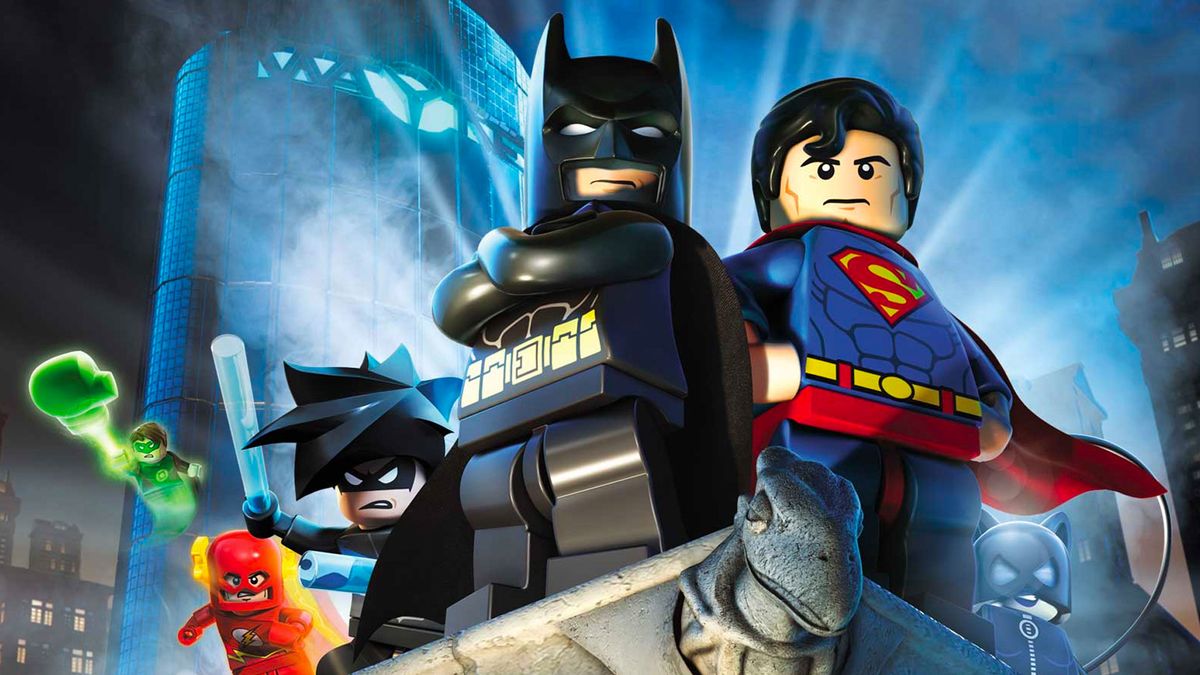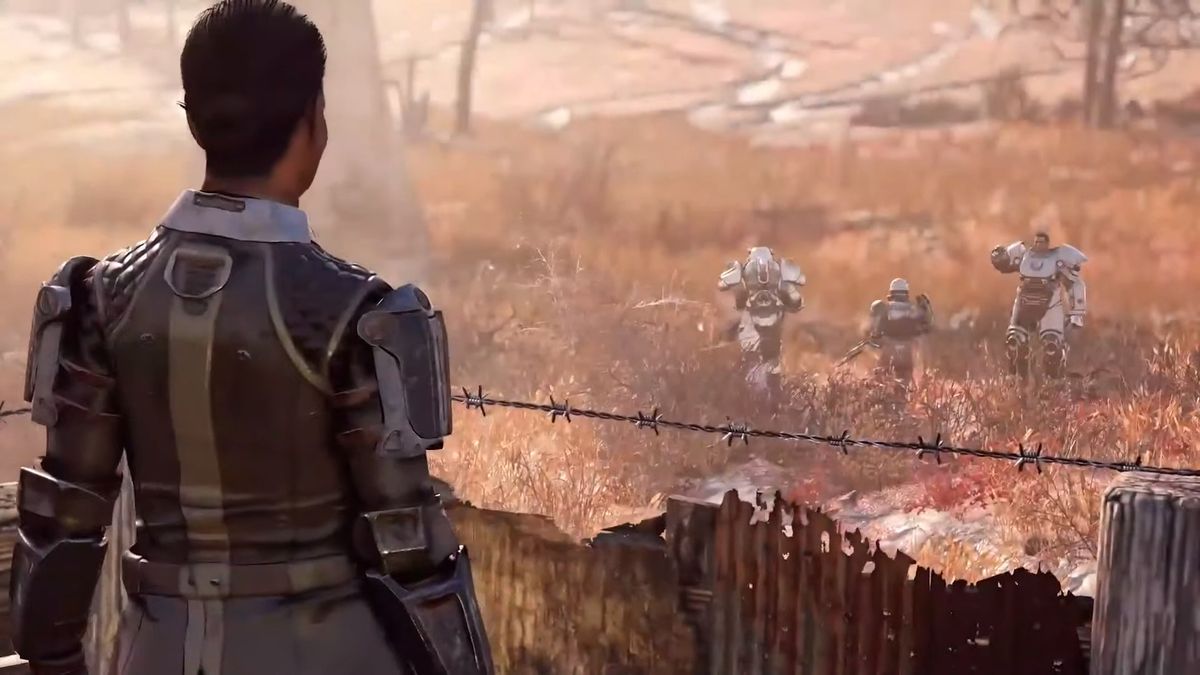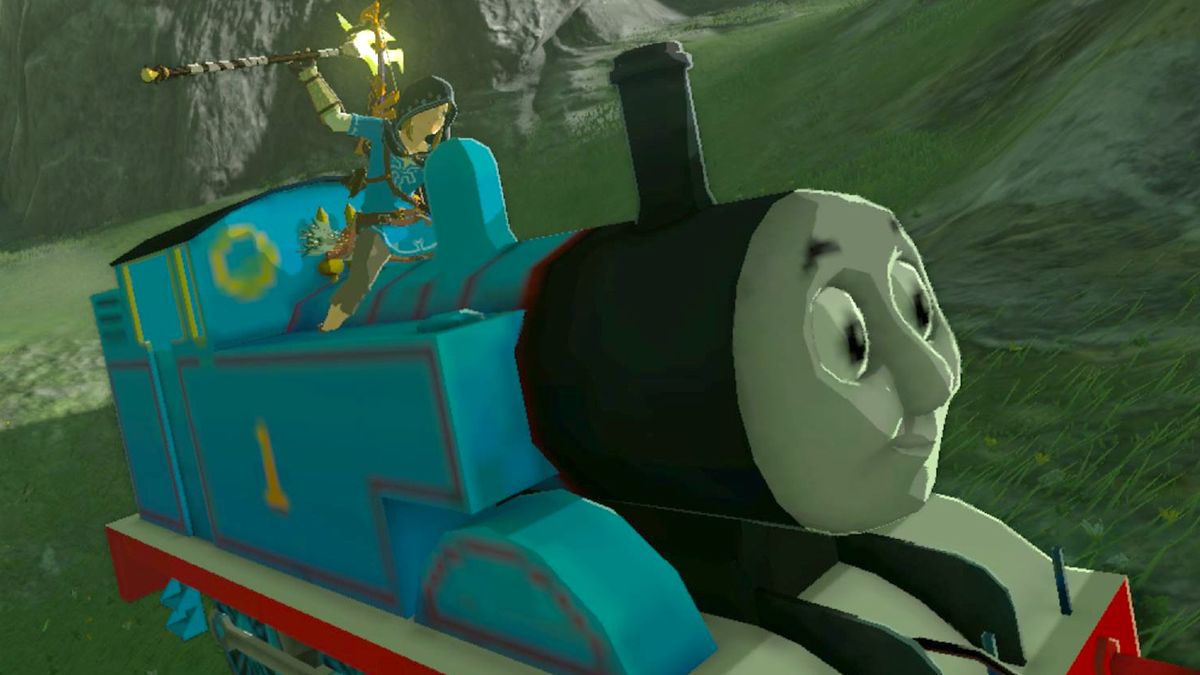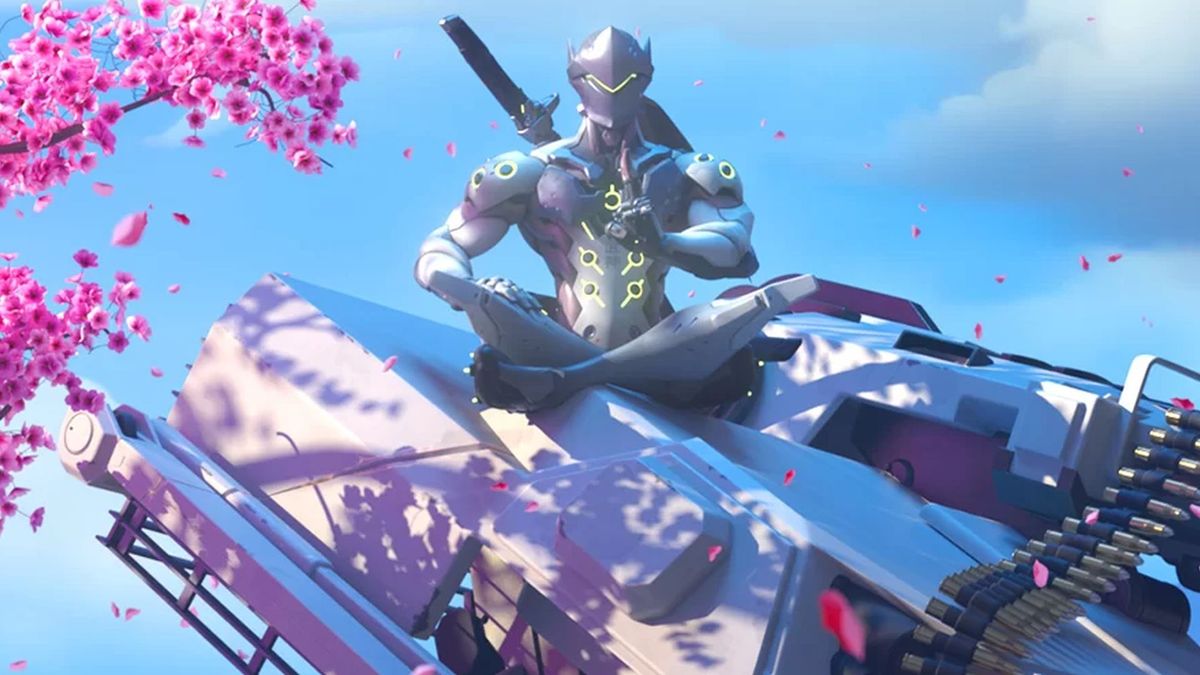Messing about

You’d better hold onto your promises, sang the Cranberries in 1999, almost certainly referencing the bold claims CD Projekt RED would make 15 years later in the lead up to hugely anticipated RPG The Witcher 3 (opens in new tab). Every game talks the talk these days: open world this, rich narrative that, movie-like graphics the other. But The Witcher 3’s different: its open world appears full of stuff you’d actually be interested in, its story continues from a masterful narrative thread woven by The Witcher 2: Assassins of Kings. And it’s not the worst-looking game out there either, is it?
CD Projekt knows how to do grown-up fantasy. There isn’t a bright green tear in the sky above hero Geralt of Rivia signalling an impending doom. There is magic, sure, but the troubles of the land he inhabits are products of political power struggles, of characters with motivations and fears. Which means its much-touted open world is a pretty immersive place. Finally getting hands-on with the game, I became so immersed that I regularly forgot I was supposed to be checking off quests and instead found myriad ways to arse about. These are they.
1. Awkwardly sat through an all-nude intro cut-scene while the developers watched me, watching it

Remember that unspeakably awful teenage moment when you were watching a movie with your parents and a sex scene came on? I do, because that exact same feeling washes over me as the camera pulls slowly up on Geralt of Rivia having a lovely bath, sans clothes, in the opening scene. And who’s that? Oh, it’s love interest Yennefer, also starkers, reclining on a chaise lounge. Behind me, I can feel the eyes of several CD Projekt developers. Watching. Judging. Should I be looking appreciatively at the lingering bum shots so as not to cause offence? Or will that make me look like some kind of deviant? What’s the protocol here?
The more pertinent question is probably this: does the scene create a sense of intimacy with its principal characters, or is it wafer-thin titillation? Well, the camera gives more attention to Yennefer than Geralt, but you could argue that’s a cinematic convention as much as anything. It’s probably a bit of both; an assertion of adult tone with a faint whiff of the tacky. Undeterred, I robe up and leave my tent of debauchery for the wider world.
2. Berated a young girl for not blindfold-backflip-swordfighting impressively enough

A crash course in Witcher lore: long ago, the gods let magic into the unnamed continent on which the games (and, prior to that, Andrzej Sapkowski’s novels) are set. Normality was never quite restored, and unearthly beasts still roam the wilds. Through some form of arcane ritual, beings like your good self are born with magical powers and not-quite-human properties. Ciri is one such, carrying in her some powerful magic that’s much coveted by The Wild Hunt, a collective who owe a bit to LOTR’s Ringwraiths.
Phew. That goes some way to explaining why Geralt is training young Ciri up with such gusto. She needs top-notch blade skills to defend herself from the Wild Hunt, and the best way to gain those skills is apparently to spar with training dummies on tiny raised platforms beside a cliff while blindfolded. And doing backflips. She appears pretty good at it to the layman’s eye, but Geralt isn’t happy. He chastises her like only a white-haired, flame-eyed magical mutant can. Before you go phoning Childline though, remember he’s doing it to protect her, really. The softie.
3. Set fire to a bear in a banquet hall

I’d try to explain the exact passage of events that lead me to this point, an enormous grizzly bearing down on me (terrible pun intended) amidst the upturned tables and gore of what was once a jolly feast, but I’d be here until the game’s out (May 19th, since you ask). The salient facts are these: I was attending a hearty banquet on the norse/celtic flavoured archipelago of Skellige, having my back slapped by enormous men with northern Irish accents and marvelling at genuinely one of the highest detail interior scenes I’ve ever witnessed in a game people danced on tables, food and drink spilling everywhere, diffuse lighting effects giving the windows a wondrous glow. I stepped downstairs to talk politics with someone, and then…
Then the bears showed up. Three or four of them. Slaughtered the whole banquet hall in seconds, leaving nothing of the feast or its patrons except what I choose to believe is strawberry jam splattered everywhere. Their mighty bear paws deal huge damage, so I keep my distance, casting the Igni sign to whittle away their health before cleaning up with a silver sword. Great night.
4. Tried to break the game (and thought I succeeded, for a second)

Tell me the very first thing you do in an open world game isn’t galloping off to the furthest point from your starting location just to see what happens on the way. Go on. See? We’re so in sync. That’s my first move, calling upon my horse and attempting to leave the sleepy autumnal village in which the prologue begins behind for some darker, deadlier climes. Since enemies don’t scale in The Witcher 3, I’ve every chance of running into impossibly powerful foes. But hang on I reach a certain point on the map, not all that fair from said sleepy village, and am unceremoniously teleported back within some invisible confines. Horrors!
‘Witcher 3 not open world after all!’ I imagine myself typing, and subsequently breaking the internet, before a developer patiently explains that the prologue area is closed off in this way to maintain narrative focus for a bit before you’re let loose into the game proper. Placated, I explore within those confines and see a tremendous amount of environmental variation even in that space. Rolling hills. Crop fields. Hamlets build near the river. A foreboding Nilfgaardian fortress. Alright, Witcher 3. You get away with that one.
5. Lost round after round in The Witcher’s version of Hearthstone

There’s a fine tradition in RPGs of dicking around in bars when you should be saving the world, and The Witcher may just offer the widest array of procrastination. Not only does it strongly hint at the return of bare-knuckle boxing from TW2, but introduces a new pub pastime in the form of a Hearthstone-aping card game.
It doesn’t work exactly like Blizzard’s time sink, though. Instead you and your opponent are both trying to fill a number of columns with the most attack points using a limited, non-replenishing deck of cards. I’ll level with you I still don’t completely understand it, and I spend longer than a monster hunter should losing precious coins to the bar fly who introduced me to it. I almost won once. I think. As with Pazaak from BioWare’s KOTOR games, there’s a long-term collectible element, so merchants across the land will stock rare and powerful cards with which to bolster your deck. For a price. What’s that, mate? Town being pillaged? In a minute, I think I’ve nearly got a handle on this…
6. Punched three men to death outside a bar, just because

Witcher lore top-up course: humans don’t exactly welcome Geralt and his kind with open arms, despite their proclivity for ridding the lands of dangerous critters. As you walk through the open world you’re subject to considerable prejudice, sometimes in the form of a comment uttered under someone’s breath as you walk past. Sometimes in the form of three stacked dudes waiting outside the pub you’ve spent all afternoon playing cards in to pulp your mutant ass.
I could take the high road here and run away from them. I could trap them with my Yrden sign and make a break for it while they’re slowed. I could even charm them with my Axii magic. But no. It’s my magical abilities they fear and hate me for in the first place. Resorting to those signs will only reinforce that negative stereotype and proliferate my reputation as untrustworthy. Instead, I punch them all in the head until they die, leaving the scene with my pride intact and my moral compass bearing due right. Be the change you want to see.
7. Restored a village’s clean water supply (by killing stuff)

One thing The Witcher games do better than anybody else late ’90s era Black Isle excluded is write meaning, purpose, and plausibility into the most inconsequential side quest. Here’s the barebones of one such optional mission I pick up: talk to a man, visit a well, look at some blood, fight a boss, talk to the man again. Standard.
But it’s the narrative stuffing which separates CD Projekt’s work. I’m talking to the man in the first place because I’ve heard his village can’t find a clean water supply since a battle took place upstream from its supplying river and the casualties keep washing down in the current. I’ve already been to that battlefield, so it makes sense to me. The well used to service the settlement in desperate times, but it’s since become haunted. I visit it to discover the remnants of a murder scene from long ago using my Witcher vision (think focus mode), and that gives me hints as to how to make the imminent boss fight easier. Even with the quest wrapped up, there are later dialogue options which let me learn more about the murder when I chat to certain characters. So. Much. Depth.
8. Ran away from a Griffin because it was just way too big

Very early on in my playthrough it becomes apparent that the surrounding area has a bit of a Griffin problem. My sleuthing instincts are first awoken when one savages a local farmer and his hay cart, flying off with an entire horse between its talons as if it were a mere vole.
However, I’m at the very beginning of the prologue, which means I’m levelled up to the approximate ferocity of Richard Hammond and stop me if I’ve mentioned this enemies don’t scale. That Griffin isn’t going to play nice just because I choose to take it on at the very start of the game, before exploring any side quests, making any potions or finding any better equipment. I take the only logical course and decide to investigate literally every other quest line first, scything down Dredgers who are terrorising a local farmhouse, banishing a Noonwraith from the haunted well, collecting disgusting bits of magical enemies for local alchemists, and popping back in the pub to see if I can’t get my head around that card game. That’s the plus side of enemies existing at a fixed level (which is visible on your HUD, an unlikely similarity with Destiny) you can potter about doing odd jobs, then return to annihilate them later.
9. Tried to figure out if this guy was a dick or not

Moral ambiguity the cornerstone of any good RPG yarn worth unfurling. This chap’s the very embodiment of that. He’s a Nilfgaardian warlord with whom I must pester for details on a certain character’s (who I won’t name) disappearance, and when I find him he’s shaking down a local peasant for a share of his village’s grain. How much grain can you give? he asks the peasant.
It transpires that some Temerians already raided the village of grain, but the peasant reckons they can give forty bushels, max. You will give thirty, says the warlord. So, he’s a good guy for letting him off lightly, or a bad guy for extorting them in the first place, or… I don’t know. What’s important is that he’s interesting. Look at my hands! he says. See the calluses? These are not the hands of an excellency but a farmer. So we speak peasant to peasant. It’s characters like him by which an open world RPG lives and dies, they get you to care about your surroundings more than grass density or tree bark fidelity. Which are both top-drawer, incidentally.
Time to get serious?

It’s surprising how familiar The Witcher 3’s core mechanics feel to its predecessor, but they also feel expanded and refined where it counts. Combat is subject to plenty of new animations which give Geralt newfound litheness, but its basic principles of dodging, blocking, parrying and spellcasting remain. It’s in the open world where the true novelty lies, both for the series and the genre we simply haven’t seen a space this detailed, technically or narratively, before.
Want more Witcher 3 info? Here’s a guide to Killing Monsters In The Game (opens in new tab). Not for you? Here are the 100 Most Anticipated Games Of 2015 (opens in new tab), then.
 Game News Video Games Reviews & News
Game News Video Games Reviews & News



